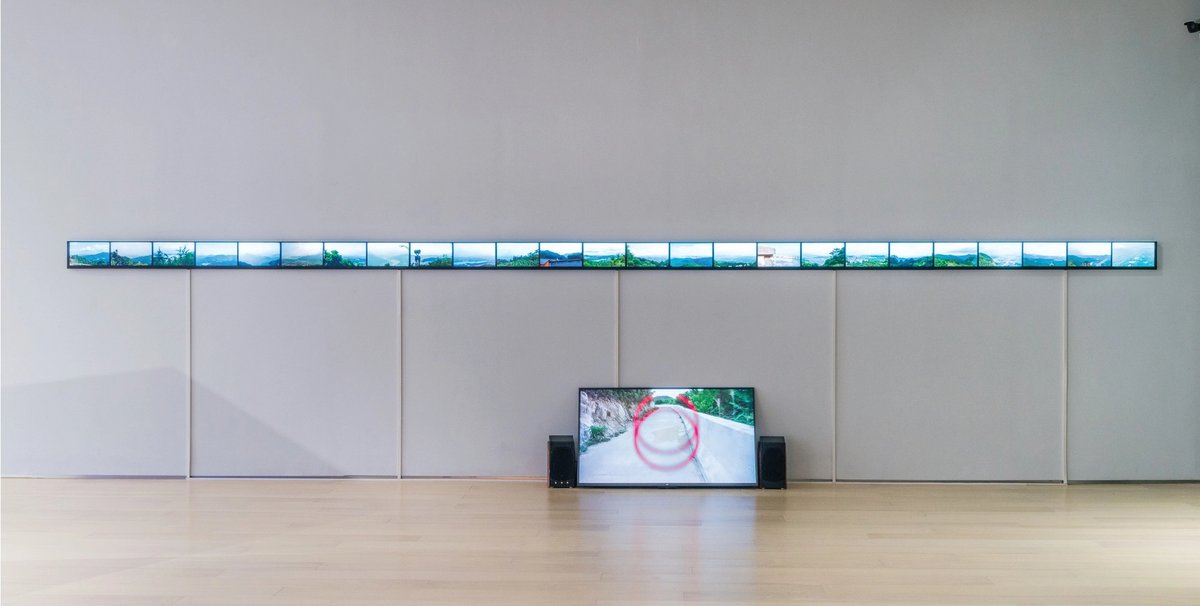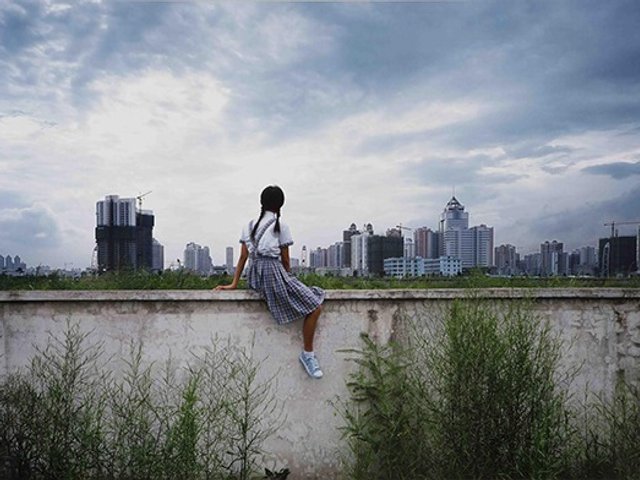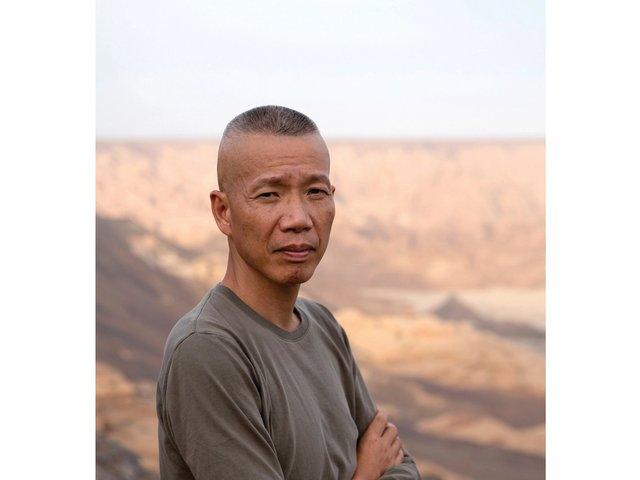In the past ten years, reams have been written about post-internet art and how artists respond to the World Wide Web. A new show at the K11 Art Foundation Pop-up Space in Sheung Wan, entitled .com/.cn (until 30 April), aims to go further by exploring the regional differences within the “digital ecosystem” and their effect on contemporary art, say the curators, Peter Eleey and Klaus Biesenbach of MoMA PS1 in New York.
“This exhibition is about the fact that the World Wide Web is actually [made up of] World Wide Webs. In this specific case it is the internet in China (.cn) and the internet in the West (.com) as indicated in the title, and already in these two systems there is an inherent difference in their structure and in their use,” Biesenbach says. The show features works by 15 artists, with around half based in China and the remainder in the US and Europe; these include Aleksandra Domanovic, Laura Owens, Liang Wei and Lin Ke.
Li Ming’s Straight Line, Landscape (2014) traces the Chinese artist’s journey from Hangzhou to Taiwan over the course of 50 days using both close-up imagery and GPS satellite images shown across 25 iPads. “You have the very personal view juxtaposed with the omniscient view from 10,000 feet above,” Biesenbach says.
Meanwhile, Graft and Ash for a Three Monitor Workstation, by the New Jersey-born artist Sondra Perry, consists of a stationary exercise bike fitted with three video screens which show the artist as an avatar. The New York-based artist Greg Edwards is showing World Painting 1 (2015), depicting imaginary, abstract terrains that resemble virtual worlds manufactured online.
The show also aims to throw new light on social media platforms and their impact in China and abroad. During several studio visits, Biesenbach and Eleey discussed with artists the idea of using Facebook and Google, and their analogous platforms in China, as communication tools. “But since they are not the same, there is still an inherently different approach. I am very impressed by WeChat and Weibo,” Biesenbach says, observing: “For a while, I noticed that artists started to make square works so they could fit into the then square-only format of Instagram.”
But in what sense does the show demonstrate how the internet has changed art—or how art is changing the internet? “Researching, image making and image publishing often happens digitally. For me, one of the main conclusions from the exhibition is that the internet is our common everyday source of stimulation, inspiration, challenge, dialogue and learning,” Biesenbach says.
Spending time in front of your computer or on your smartphone has become not only an extension of your own body, but also an extension of institutions like libraries, museums, television, research laboratories and public podiums, he argues. The show marks the launch of a research partnership in collaboration with the K11 Foundation, founded by the billionaire Adrian Cheng, which focuses on the “regional internets” examined in the exhibition.




